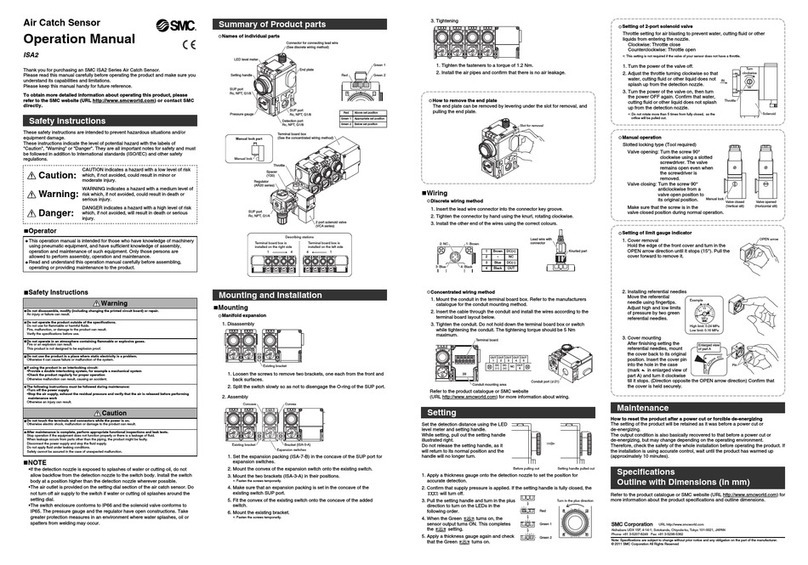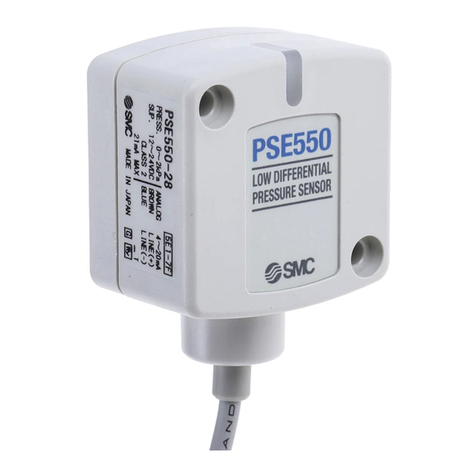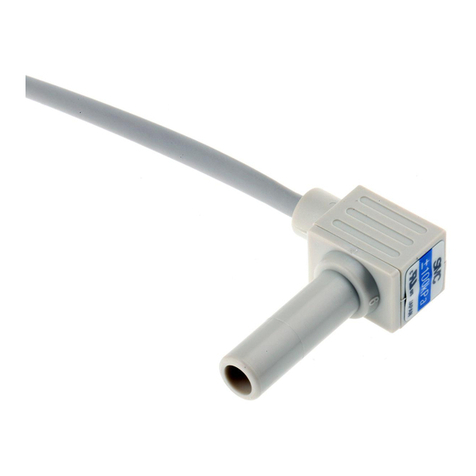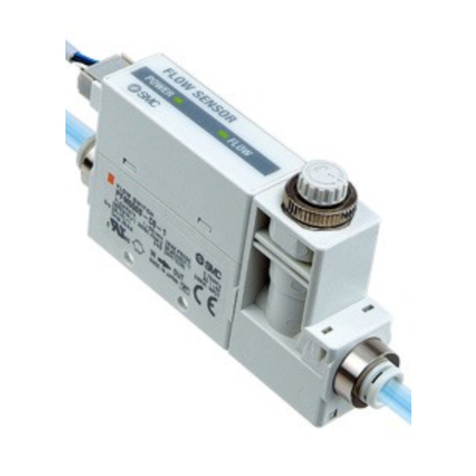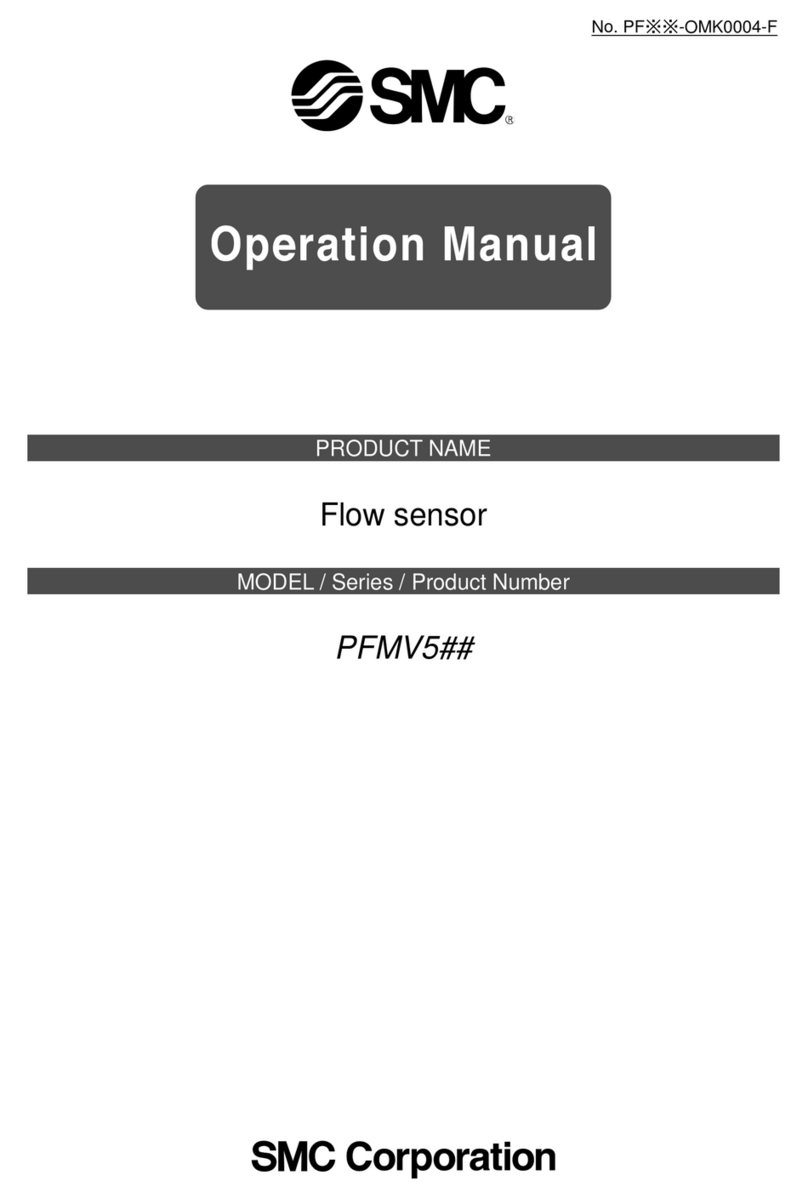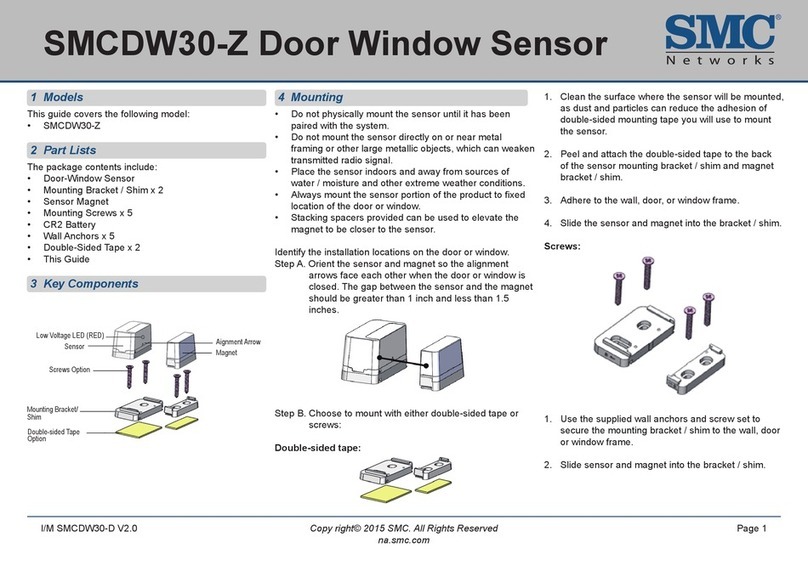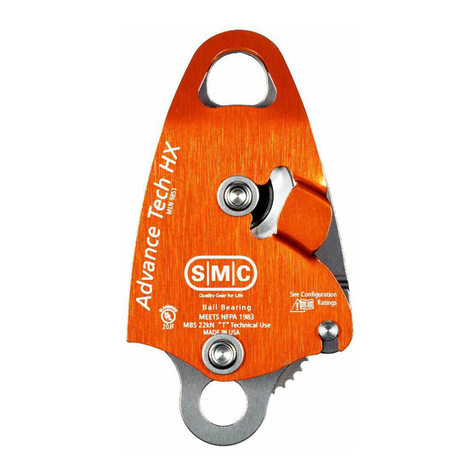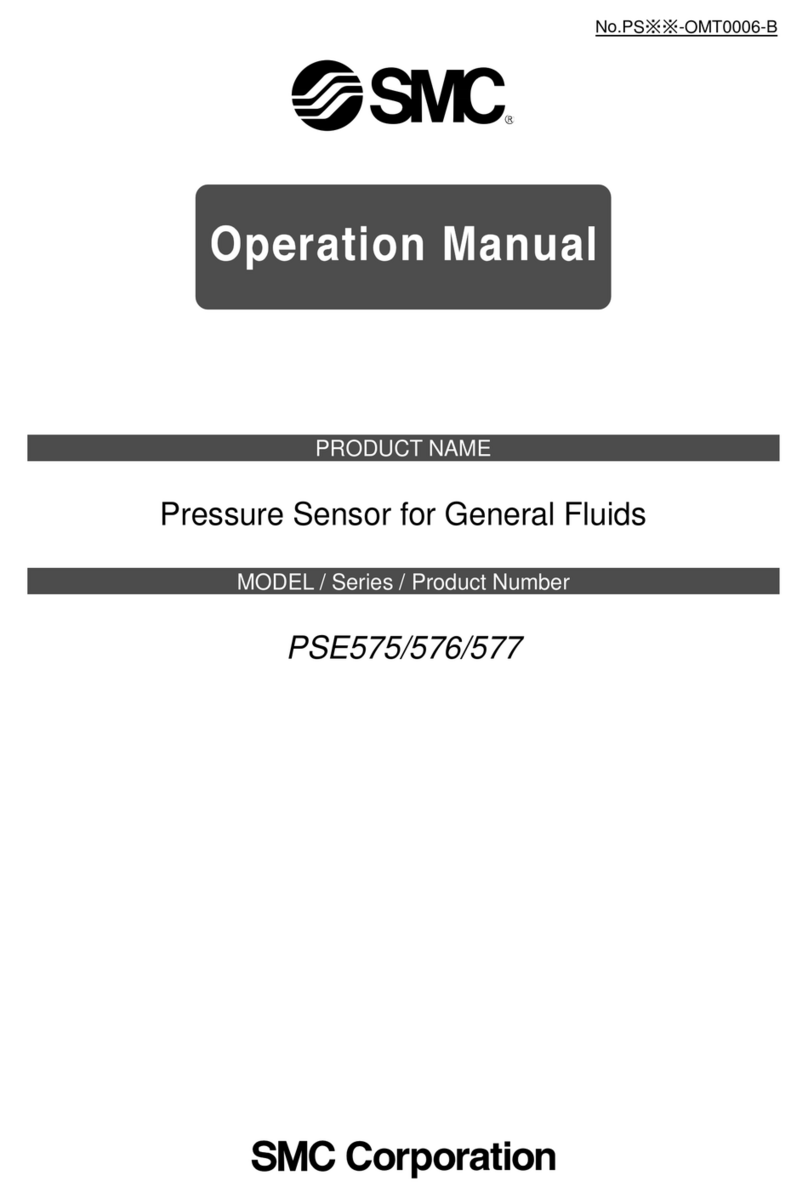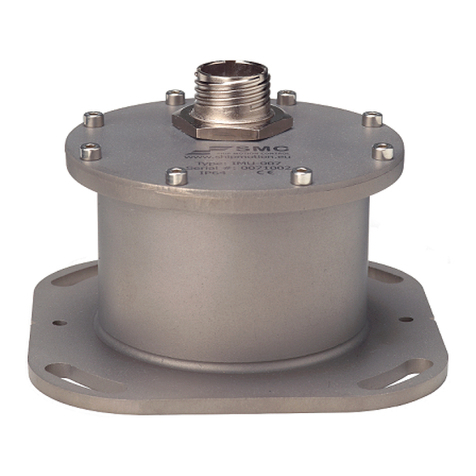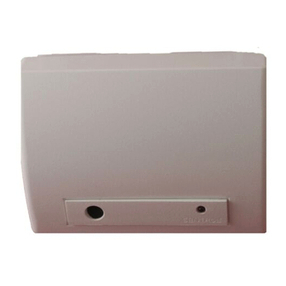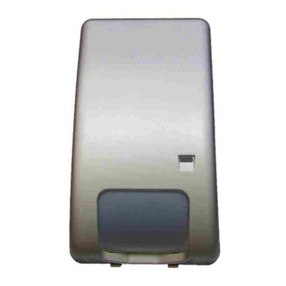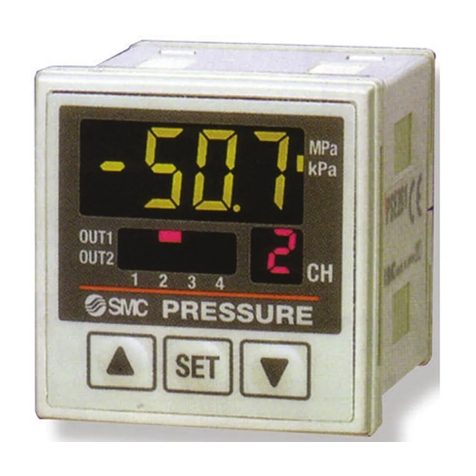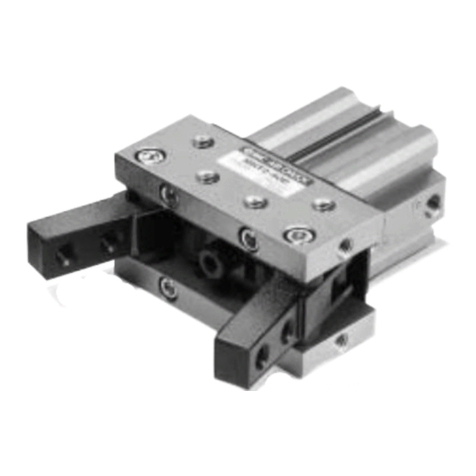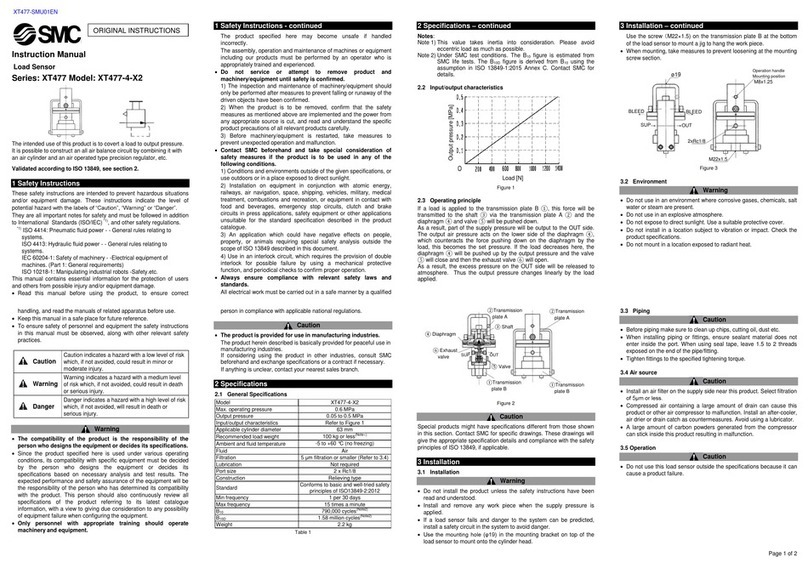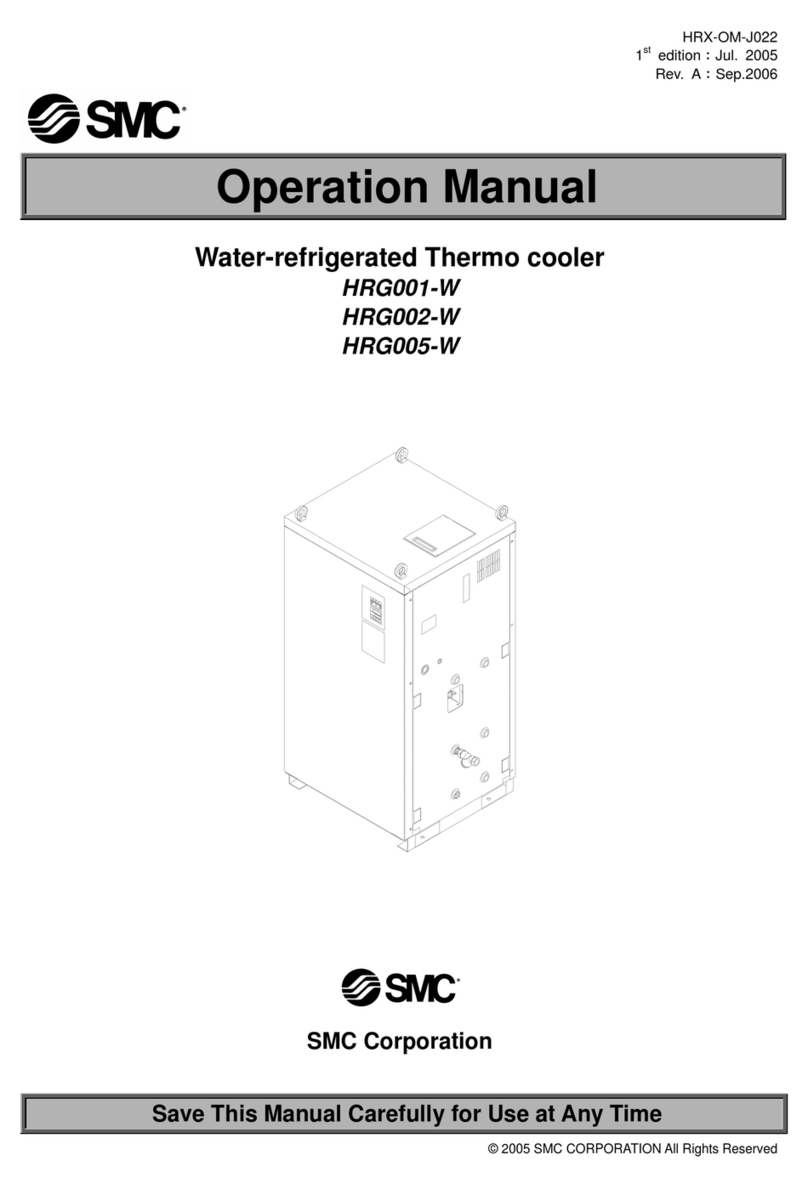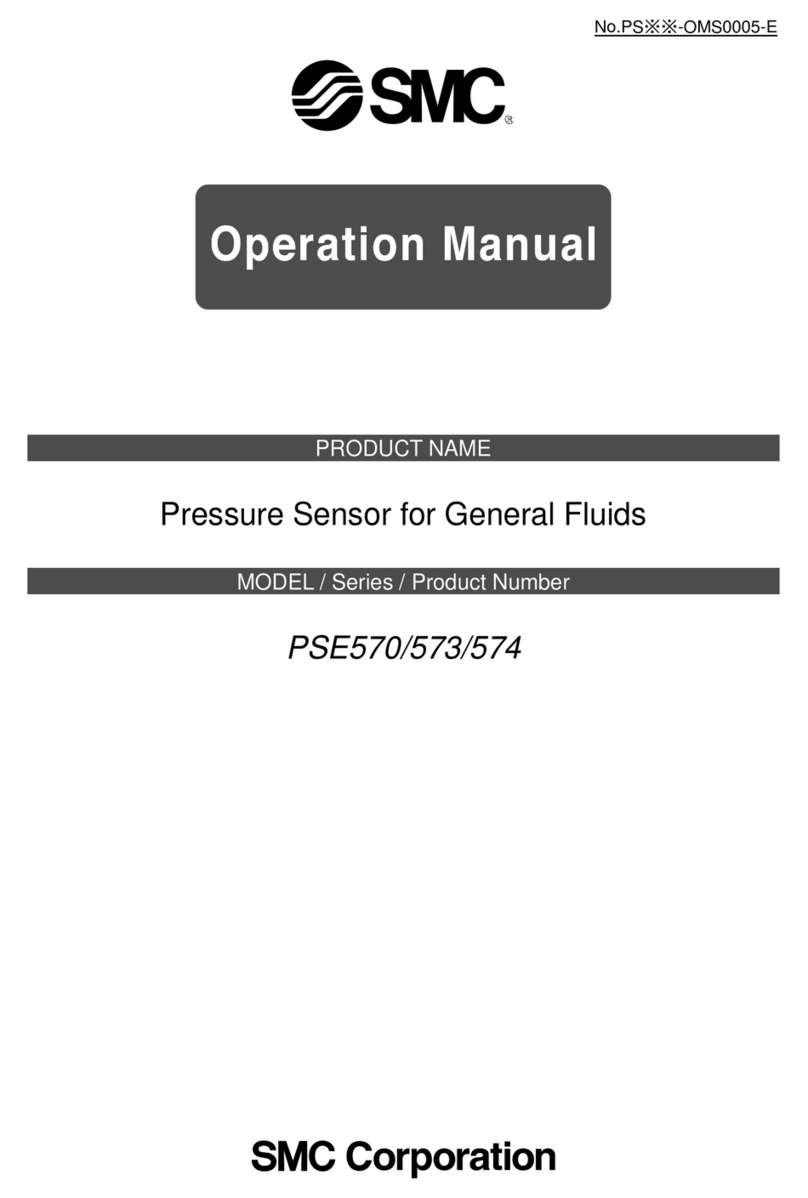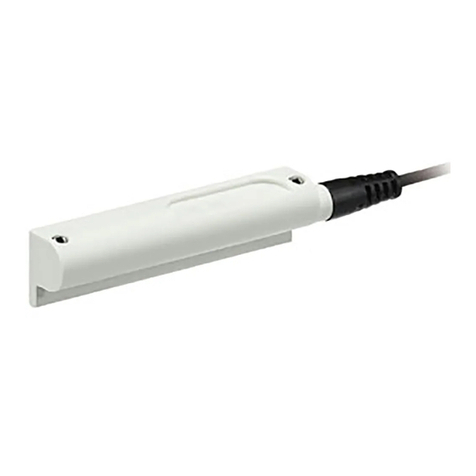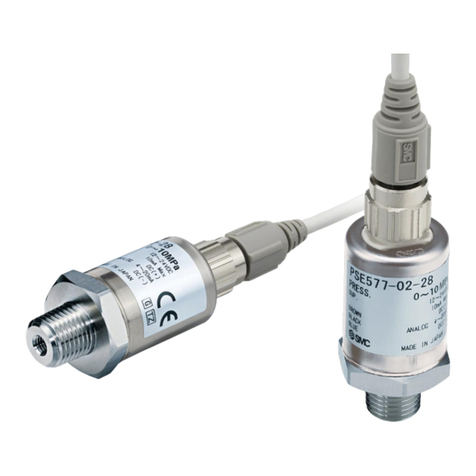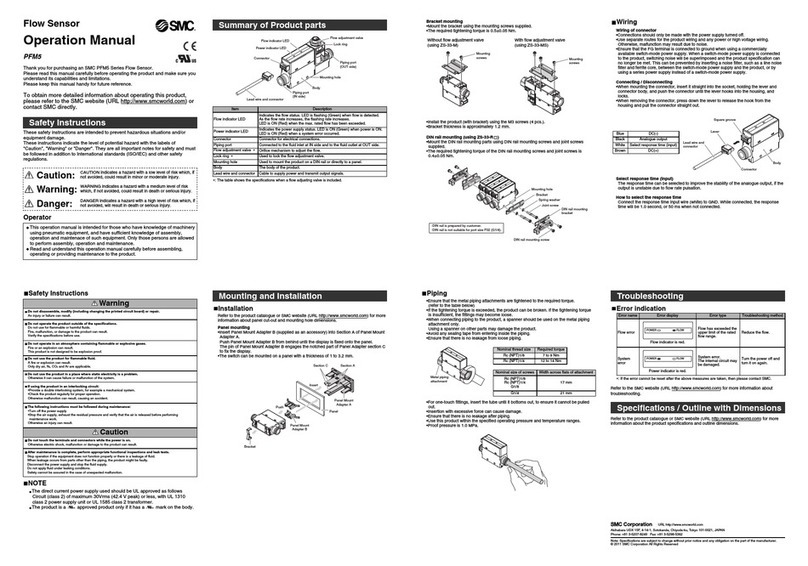Red
Green 1
Above set position
Appropriate set position
Green 2 Below set position
1. Insert the lead wire connector into the connector key groove.
2. Tighten the connector by hand using the knurl, rotating clockwise.
3. Install the other end of the wires using the correct colours.
1. Mount the conduit in the terminal board box. Refer to the manufacturers
catalogue for the conduit mounting method.
2. Insert the cable through the conduit and install the wires according to the
terminal board layout below.
3. Tighten the conduit. Do not hold down the terminal board box or switch
while tightening the conduit. The tightening torque should be 5 Nm
maximum.
Concentrated wiring met od
Setting
Set the detection distance using the LED
level meter and setting handle.
While setting, pull out the setting handle
illustrated right.
Do not release the setting handle, as it
will return to its normal position and the
handle will no longer turn.
1. Apply a thickness gauge onto the detection nozzle to set the position for
accurate detection.
2. Confirm that supply pressure is applied. If the setting handle is fully closed, the
will turn off.
3. ull the setting handle and turn in the plus
direction to turn on the LEDs in the
following order.
4. When the Green turns on, the
sensor output turns ON. This completes
the setting.
5. Apply a thickness gauge again and check
that the Green turns on.
Setting of 2-port solenoid valve
Throttle setting for air blasting to prevent water, cutting fluid or other
liquids from entering the nozzle.
Clockwise: Throttle close
Counterclockwise: Throttle open
∗: This setting is not required if the valve of your sensor does not have a throttle.
1. Turn the power of the valve off.
2. Adjust the throttle turning clockwise so that
water, cutting fluid or other liquid does not
splash up from the detection nozzle.
3. Turn the power of the valve on, then turn
the power OFF again. Confirm that water,
cutting fluid or other liquid does not splash
up from the detection nozzle.
∗: Do not rotate more than 5 times from fully closed, as the
orifice will be pulled out.
Manual operation
Slotted locking type (Tool required)
Valve opening: Turn the screw 90°
clockwise using a slotted
screwdriver. The valve
remains open even when
the screwdriver is
removed.
Valve closing: Turn the screw 90°
anticlockwise from a
valve open position to
its original position.
Make sure that the screw is in the
valve closed position during normal operation.
Setting of limit gauge indicator
1. Cover removal
Hold the edge of the front cover and turn in the
O EN arrow direction until it stops (15°). ull the
cover forward to remove it.
2. Installing referential needles
Move the referential
needle using fingertips.
Adjust high and low limits
of pressure by two green
referential needles.
3. Cover mounting
After finishing setting the
referential needles, mount
the cover back to its original
position. Insert the cover pin
into the hole in the case
(mark in enlarged view of
part A) and turn it clockwise
till it stops. (Direction opposite the O EN arrow direction) Confirm that
the cover is held securely.
NOTE
•If the detection nozzle is exposed to splashes of water or cutting oil, do not
allow backflow from the detection nozzle to the switch body. Install the switch
body at a position higher than the detection nozzle wherever possible.
•The air outlet is provided on the setting dial section of the air catch sensor. Do
not turn off air supply to the switch if water or cutting oil splashes around the
setting dial.
•The switch enclosure conforms to I 66 and the solenoid valve conforms to
I 65. The pressure gauge and the regulator have open constructions. Take
greater protection measures in an environment where water splashes, oil or
spatters from welding may occur.
Air Catc Sensor
Operation Manual
ISA2
Thank you for purchasing an SMC ISA2 Series Air Catch Sensor.
lease read this manual carefully before operating the product and make sure you
understand its capabilities and limitations.
lease keep this manual handy for future reference.
To obtain more detailed information about operating t is product, please
refer to t e SMC website (URL ttp://www.smcworld.com) or contact SMC
directly.
Safety Instructions
These safety instructions are intended to prevent hazardous situations and/or
equipment damage.
These instructions indicate the level of potential hazard with the labels of
"Caution", "Warning" or "Danger". They are all important notes for safety and must
be followed in addition to International standards (ISO/IEC) and other safety
regulations.
CAUTION indicates a hazard with a low level of risk
which, if not avoided, could result in minor or
moderate injury.
Operator
This operation manual is intended for those who have knowledge of machinery
using pneumatic equipment, and have sufficient knowledge of assembly,
operation and maintenance of such equipment. Only those persons are
allowed to perform assembly, operation and maintenance.
Read and understand this operation manual carefully before assembling,
operating or providing maintenance to the product.
Caution:
Warning:
Danger:
WARNING indicates a hazard with a medium level of
risk which, if not avoided, could result in death or
serious injury.
DANGER indicates a hazard with a high level of risk
which, if not avoided, will result in death or serious
injury.
Safety Instructions
Do not disassemble, modify (including c anging t e printed circuit board) or repair.
An injury or failure can result.
Do not operate in an atmosp ere containing flammable or explosive gases.
Fire or an explosion can result.
This product is not designed to be explosion proof.
Do not use t e product in a place w ere static electricity is a problem.
Otherwise it can cause failure or malfunction of the system.
If using t e product in an interlocking circuit:
•Provide a double interlocking system, for example a mec anical system
•C eck t e product regularly for proper operation
Otherwise malfunction can result, causing an accident.
T e following instructions must be followed during maintenance:
•Turn off t e power supply
•Stop t e air supply, ex aust t e residual pressure and verify t at t e air is released before performing
maintenance work
Otherwise an injury can result.
After maintenance is complete, perform appropriate functional inspections and leak tests.
Stop operation if the equipment does not function properly or there is a leakage of fluid.
When leakage occurs from parts other than the piping, the product might be faulty.
Disconnect the power supply and stop the fluid supply.
Do not apply fluid under leaking conditions.
Safety cannot be assured in the case of unexpected malfunction.
Do not touc t e terminals and connectors w ile t e power is on.
Otherwise electric shock, malfunction or damage to the product can result.
Do not operate t e product outside of t e specifications.
Do not use for flammable or harmful fluids.
Fire, malfunction, or damage to the product can result.
Verify the specifications before use.
Warning
Caution
Summary of Product parts
Mounting and Installation
